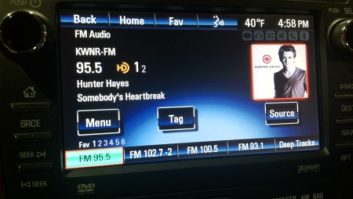
credit: iStockphoto/Christophe Heylen At the student assembly for ninth-grade graduation, my middle school principal declared that by the year 2000 we would all own flying cars. Perhaps as remarkable, many of my classmates and I believed him.
I learned two life lessons from this experience, of which I remind myself regularly. First, it’s dangerous to predict the future. Second, it’s vital to understand the present, so as to not confuse it with the future.
A contemporary example: I hear people refer to the use of mobile devices as “the future.” Sorry, but this is not correct. Mobile phones, smartphones, tablets — these are ubiquitous. They are so common that families are banning their use at meals. Want to impress a first date? Take out your mobile phone while he or she is talking and see what kind of reaction you receive.
We love our mobile devices. We hate our mobile devices. We have a relationship with our mobile devices. And if you’re not thinking about the relationship between mobile and radio, you are missing a boat that sailed some time ago.
RWD
Your first mobile priority concerns your website.
If your website doesn’t show up properly on a mobile device, it’s time for an immediate change. The availability of mobile broadband and easily accessed Wi-Fi — at work, at the gym, at coffee shops and even over wide outdoor areas like college campuses — is expanding constantly.
You may not realize it, but without a mobile-optimized website, you are turning away audience every day. Furthermore, once someone has a poor experience, he may not revisit your website on a mobile device for a long time.
Take the time to research “responsive Web design,” often called RWD. You’ll learn how this technology sniffs out the device and properly sizes content from your current website to be delivered into a consumer’s hand. For the budget-conscious, RWD also means you will not have to change your workflow.
In most cases, your mobile design will require a different look than your traditional website. It’s essential for navigation menus to be bigger, buttons larger and a search box located easily. You should feature only your most significant content on your mobile site. It won’t hurt to pore over all the content for search purposes, but that doesn’t mean you need to link from your navigation.
SEPARATION ANXIETY
But wait … aren’t companies now building separate mobile sites that are completely different than their main websites?
Yes, this is an emerging trend, and it may make sense if you have underwriting from sponsors or funding from listeners as is the case in public radio. Building and operating a unique mobile website has a huge impact on workflow because it means operating two content management systems and double-posting a lot of material.
THE SEXY WORLD OF APPS
Now that your mobile Web plan is in motion, let’s dive into the sexy world of apps! I love ‘em, and my bias is to state emphatically that radio belongs in the app game. In fact, I can’t imagine some formats — such as news — without at least a basic app.
Why? Because an app assures your most upwardly mobile (forgive the pun) audience that you’re ready to serve them with the best technology and become a permanent part of their mobile screen top experience.
Innovators in the mobile app space are creating app home screens that link to pages that actually reside on the mobile website. Most users will likely not notice that they are actually being moved off the app and into a mobile site. The click-through is quick, and if the look is the same, it’s difficult to tell that this transition even occurred.
This type of development cuts down on costs and reduces technical issues. It also drives more page views/impressions to your mobile site, enabling you to sell better-integrated advertising.
BEGIN AT THE BEGINNING
Now, budgets being what they are, if you’re going to launch just one app, where do you start?
Android dominates in widespread use (as well as app downloads, for now), but Apple has its hard-core (oops, sorry, couldn’t resist) advocates and heavy users.
I’d go Android first, then iPhone, and then move on to tablet development. A side benefit is the ability to push alerts directly to the consumer through the app. This drives app use and has the potential (if not abused) to drive listening to important events.
BACK TO BASICS
What other mobile basics could you be missing?
Although no longer the media poster child, SMS text messaging should continue to be an important part of your mobile communications plan. Radio needs to be offering news, weather and sports (score) alerts to mobile phones. Text messaging still has an amazing open rate, partly because it’s hard to miss a text message on your phone if both visual and audio alerts deploy when texts arrive.
A big shout-out to those in the industry who continue to work with phone manufacturers to get radio reception chips into more phones and tablets. When I listen to streaming radio on my phone, it reminds me a bit of using a transistor radio. Sometimes the past does collide with the present!
Find more of Mark Lapidus’ Promo Power column atradioworld.com.











